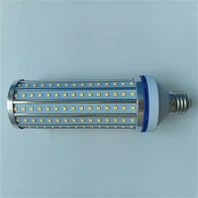The Effect of LED Energy Savings on the Reduction of Global Carbon Emissions
One of the most efficient and underestimated methods for lowering carbon emissions is the worldwide switch to LED (Light Emitting Diode) lighting. Lighting is a crucial area for energy efficiency improvements, as it accounts for almost 15% of the world's electricity use.
This analysis includes the following topics:
✔ Measuring LED energy savings
✔ Impacts on carbon reduction, both direct and indirect
✔ Regional effects (EU, US, China, etc.)
✔ Smart lighting's potential for the future
2. LED vs. Traditional Lighting: Energy Savings Breakdown
2.1 Efficiency Comparison
| Lighting Type | Efficacy (lm/W) | Lifespan (hours) | Energy Use (for 800 lumens) |
|---|---|---|---|
| Incandescent | 10–15 | 1,000 | 60W |
| CFL | 50–60 | 8,000 | 15W |
| LED | 80–200 | 25,000–50,000 | 8W |
Key Insight:
A single 60W incandescent bulb replaced by a 9W LED saves ~500 kWh over 10 years.
If all global lighting switched to LEDs, annual electricity savings could exceed 1,400 TWh (equivalent to 500 coal-fired power plants).
2.2 Global Energy Savings from LEDs
IEA Estimate (2023): LEDs have reduced global lighting electricity demand by ~40% since 2010.
US DoE Report: By 2035, LED adoption could save 3,000 TWh cumulatively-equivalent to $250B in energy costs.
3. Carbon Emission Reductions: Direct and Indirect Effects
3.1 Direct CO₂ Savings
| Region | Annual LED Savings (TWh) | CO₂ Reduction (Mt/year) |
|---|---|---|
| European Union | 120 | 45 Mt (Denmark's total emissions) |
| United States | 150 | 80 Mt (20M cars off roads) |
| China | 300 | 250 Mt (5% of national emissions) |
| India | 80 |
60 Mt (10% of power sector emissions) |
Calculation Basis:
1 TWh saved ≈ 0.5 Mt CO₂ (varies by grid carbon intensity).
LEDs in the US alone prevent ~80 million tons of CO₂/year-equal to shutting down 20 coal plants.
3.2 Indirect Advantages
✔Decrease in Cooling Requirements
LEDs produce approximately 90%less excess heat compared to incandescent bulbs,which decreases the need for air conditioning(resulting in an additional 5–10%energy savings).
✔Synergy with Smart Lighting
The integration of motion sensors and daylight harvesting can provide an extra 20–30%in energy savings.
✔Diminished Manufacturing Impact
Given that LEDs have a lifespan 5–10 times longer than traditional bulbs,they contribute to lower emissions from production and disposal processes.
• Regional Analysis
4.1 China:Leading the Global LED Market
Policy:"China's 13th Five-Year Plan"set a target for 100%LED street lighting by 2020.
Outcome:
Achieved an annual saving of 200 TWh(10%of China's residential electricity consumption).
Prevented 150 Mt CO₂/year(comparable to the emissions of burning 40M tons of coal).
4.2 European Union:Eliminating Halogen Bulbs
Regulation:The EU phased out most halogen bulbs by 2018,promoting the use of LEDs.
Effect:
Saved 50 TWh annually(15%of Germany's residential electricity usage).
Reduced CO₂ emissions by 20 Mt/year(equivalent to the emissions of 5M cars).
4.3 United States:Transition to LED Street Lighting
Case Study:Los Angeles replaced 140,000 streetlights with LEDs,resulting in savings of:
10M/year in energy expenses.
40,000 tons CO₂/year(equivalent to planting 1M trees).
• Future Prospects:Intelligent LEDs and Cutting-Edge Technologies
5.1 Advanced Lighting Systems
Additional potential savings of 30%through:
Motion detection sensors
Adaptive brightness levels(e.g.,automatic dimming at night)
Controls linked to daylight availability
5.2 Innovative Developments
✔Human-Centric Lighting(HCL)
Adjustable LEDs enhance productivity and well-being while conserving energy.
✔Li-Fi(Light Fidelity)
LEDs enable data transmission,which can decrease the energy consumption of WiFi networks.
✔Solar-Powered LEDs
Providing off-grid lighting solutions for developing countries,reducing reliance on fossil-fuel-based lighting.
• Challenges&Constraints
6.1 Hurdles to Widespread Adoption
Initial Cost:LEDs are 2–3 times more expensive than CFLs(though the return on investment is typically less than 2 years).
E-Waste Issues:Inadequate recycling of LED components(e.g.,rare-earth elements).
Risks of Circadian Disruption:Excessive use of cool-white LEDs during nighttime.
6.2 Policy Deficiencies
Developing countries continue to rely on inexpensive incandescent bulbs(e.g.,only 30%LED adoption in Africa).
Subsidies for CFLs(e.g.,India's UJALA program)hinder the transition to LEDs.
• Conclusion:LEDs as a Climate Change Catalyst
Key Insights:
✔LEDs currently save around 1,400 TWh/year globally,preventing over 600 Mt CO₂ annually.
✔Full implementation could double these energy savings by 2030.
✔The integration of smart lighting and solar technology will further enhance the benefits.
✔Policy support(through bans and subsidies)is crucial in emerging markets.
Final Assessment:
Often underestimated,the efficiency of LEDs represents one of the quickest and most cost-effective methods for reducing emissions-already accounting for approximately 2%of global CO₂ reductions.In conjunction with renewable energy sources and smart technology,lighting could contribute 5–10%of the necessary emission cuts needed by 2050.




